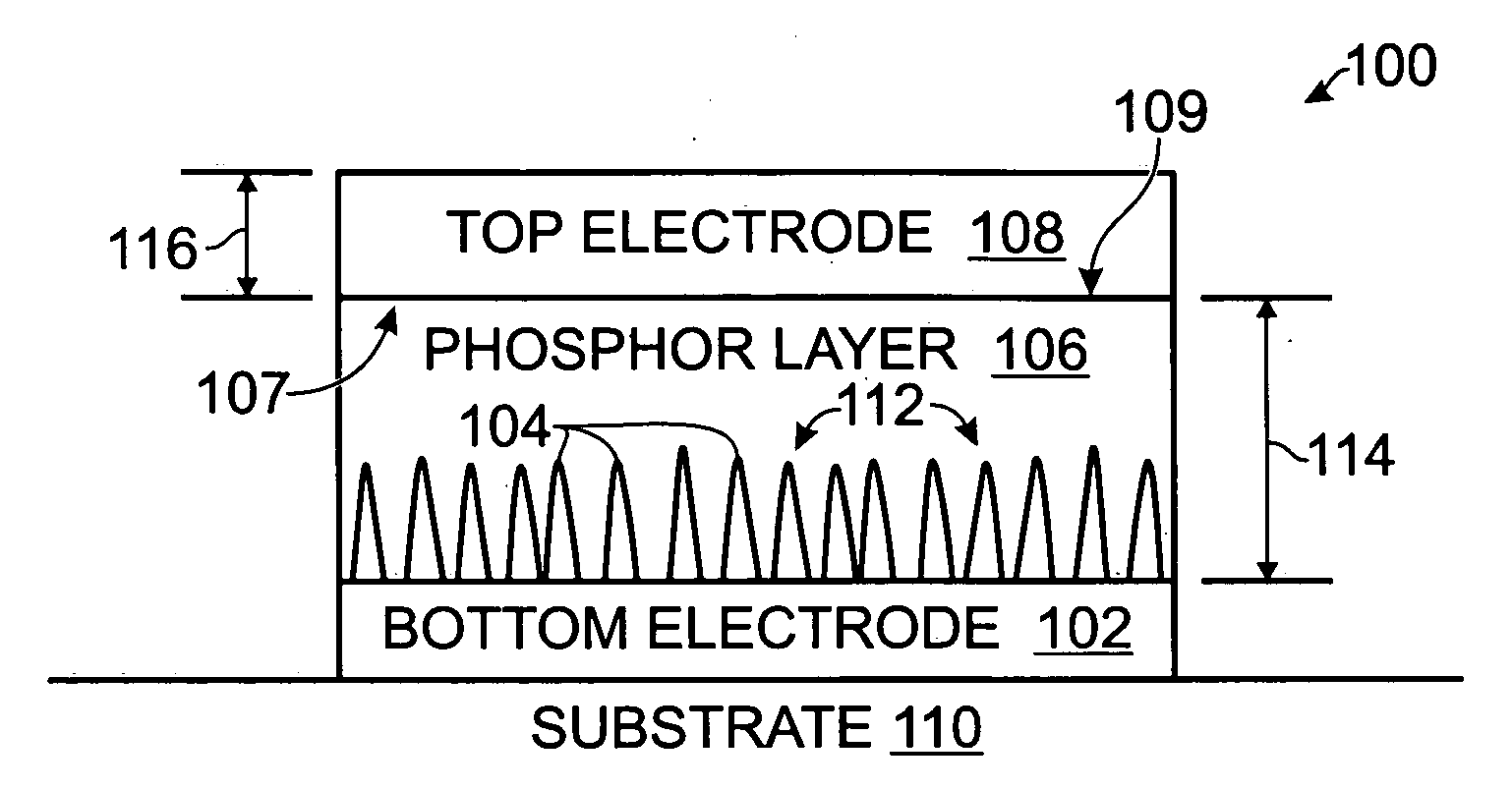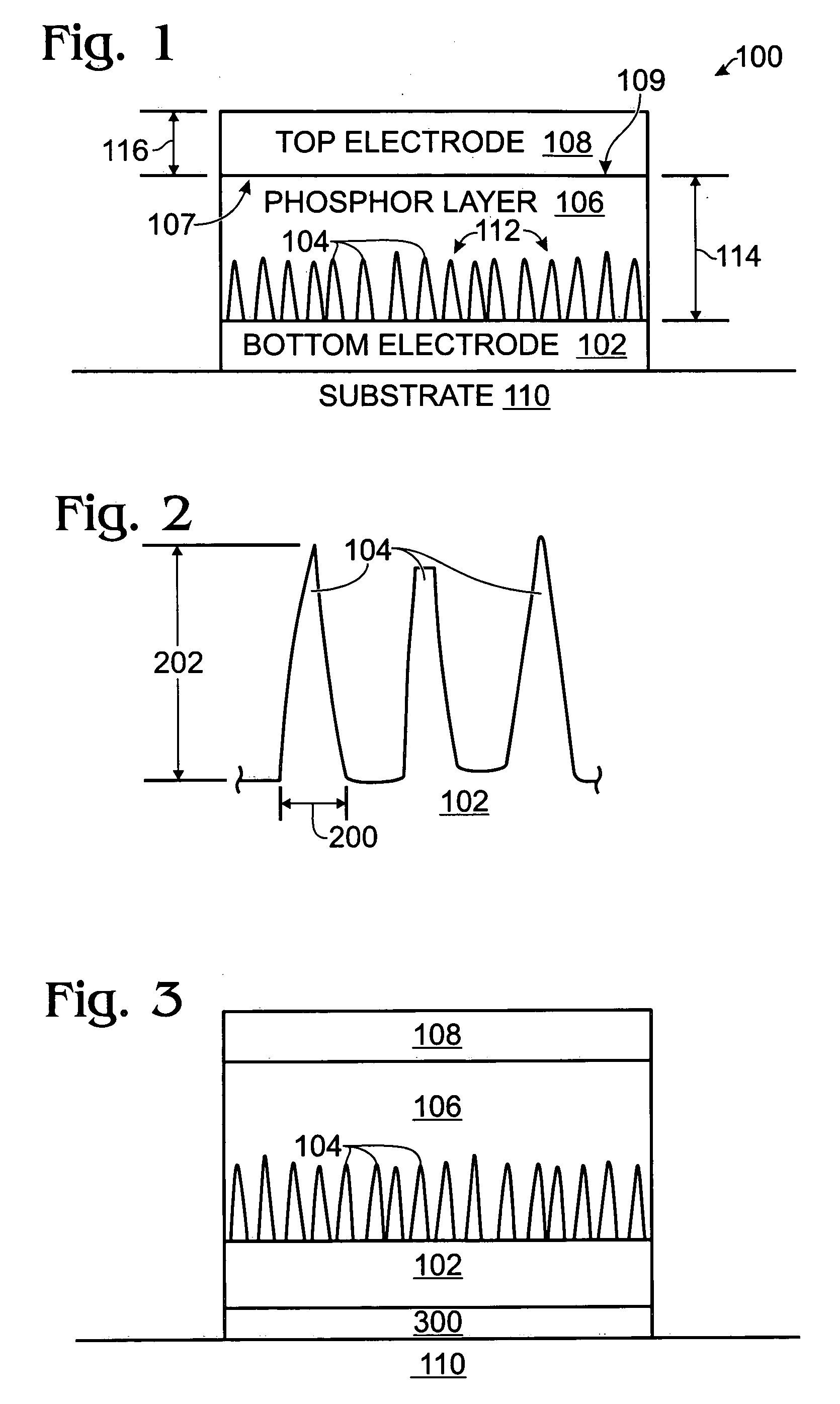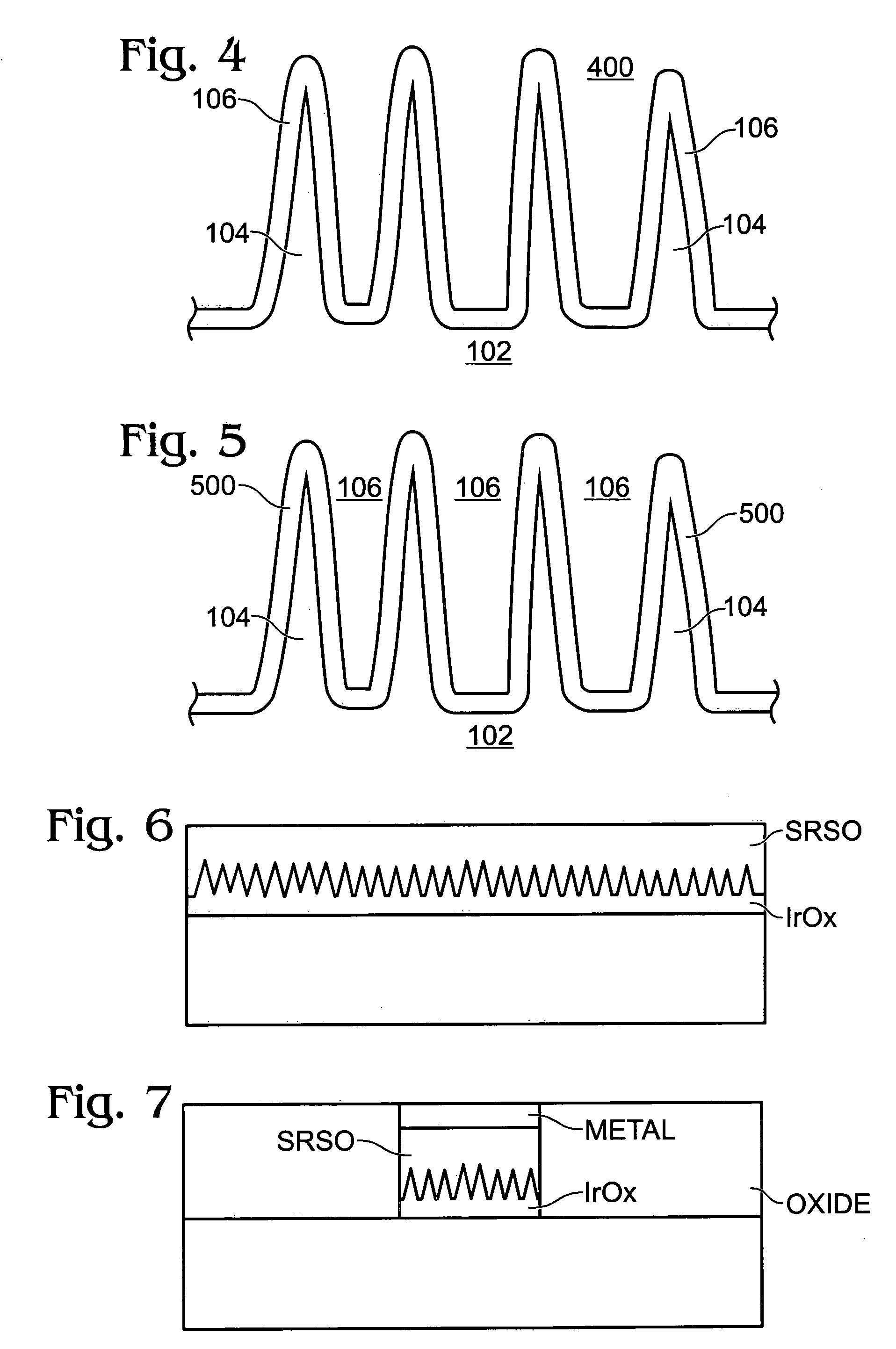Silicon phosphor electroluminescence device with nanotip electrode
a technology of nano-tip electrodes and electroluminescence devices, which is applied in the field of integrated circuit (ic) fabrication, can solve problems such as poor light generation efficiency, and achieve the effect of high field
- Summary
- Abstract
- Description
- Claims
- Application Information
AI Technical Summary
Benefits of technology
Problems solved by technology
Method used
Image
Examples
Embodiment Construction
[0026]FIG. 1 is a partial cross-sectional view of a nanotip electrode electroluminescence (EL) device. The EL device 100 comprises a bottom electrode 102 with nanotips 104. A silicon (Si) phosphor layer 106 is adjacent the nanotips 104. A transparent top electrode 108 overlies the Si phosphor layer 106. The Si phosphor layer 106 is interposed between the top electrode 108 and the bottom electrode 102.
[0027] As used herein, the word “nanotip” is not intended to be limited to any particular physical characteristics, shapes, or dimensions. The nanotips may alternately be known as nanorods, nanotubes, or nanowires. In some aspects (not shown), the nanotips may form a hollow structure. In other aspects (not shown), the nanotips may be formed with a plurality of tips ends. Although the nanotips 104 are shown substantially vertical, and therefore, perpendicular to the (horizontal) surfaces of the bottom electrode 102, the nanotips are not limited to any particular orientation with respect...
PUM
| Property | Measurement | Unit |
|---|---|---|
| size | aaaaa | aaaaa |
| height | aaaaa | aaaaa |
| partial pressure | aaaaa | aaaaa |
Abstract
Description
Claims
Application Information
 Login to View More
Login to View More - R&D
- Intellectual Property
- Life Sciences
- Materials
- Tech Scout
- Unparalleled Data Quality
- Higher Quality Content
- 60% Fewer Hallucinations
Browse by: Latest US Patents, China's latest patents, Technical Efficacy Thesaurus, Application Domain, Technology Topic, Popular Technical Reports.
© 2025 PatSnap. All rights reserved.Legal|Privacy policy|Modern Slavery Act Transparency Statement|Sitemap|About US| Contact US: help@patsnap.com



